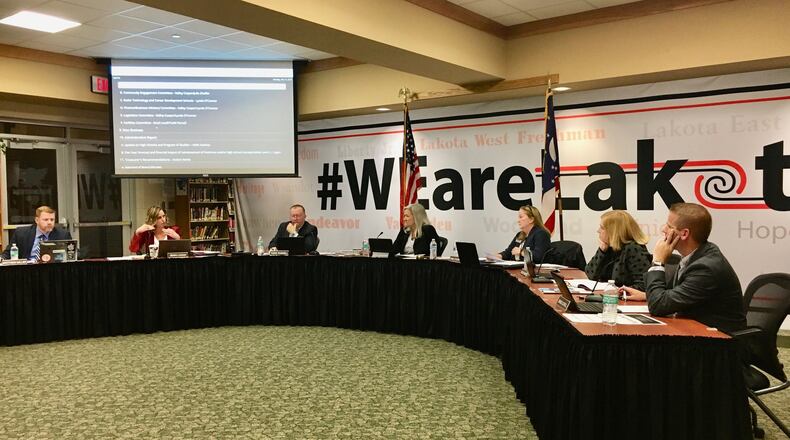According to the latest projections by Lakota Treasurer Jenni Logan, the district may have a spending deficit in 2022 of more than $1 million that, if unaddressed, could rise to a $7.5 million budget shortfall by 2024.
The five-year budget projections, required to be approved by local boards and filed with the Ohio Department of Education and Ohio Auditor’s office, are done without local officials knowing the levels of state funding coming to their districts in future biennium budgets, Logan said.
State funding accounts for about half of the annual revenue for Lakota Schools, which have an annual operating budget of $177 million, while the remaining district revenue is generated by local school taxes and a smaller state and federal grants for specific programs.
The five-year financial plan included no additional school tax levies. Lakota last saw voters approve a new operating levy in 2013.
During the same meeting, the baord voted to restore freshman busing beginning next school year. Board Vice President Todd Parnell cited concerns on the financial impact of bringing back busing, which will add up to an additional annual expense of $2.7 million, on the district’s five-year budget projection.
“I voted not to approve the five-year forecast because it shows a spending deficit in 2022 and I did not agree on some of the assumptions – both on the revenue side and the expenditure side,” Parnell said.
But both Treasurer Jenni Logan and Superintendent Matt Miller then assured the board they could come to them later with a plan to reduce the projected budget shortfalls estimated to start in 2022 at more than $1 million.
The board’s subsequent busing restoration resolution including a stipulation that money would be re-allocated to eliminate the deficit in 2022, said Parnell, “therefore I went ahead and approved freshmen busing.”
Lakota Board of Education President Julie Shaffer also cited the unknown variable of future state budgets, the fluctuating local economy and confidence in district officials to reduce future spending to lessen or eliminate the projected budget deficits.
“Lakota is in the strongest financial position it has been in years. We have managed to maximize services to our students while still being good stewards of our taxpayers’ dollars,” Shaffer said.
About the Author
